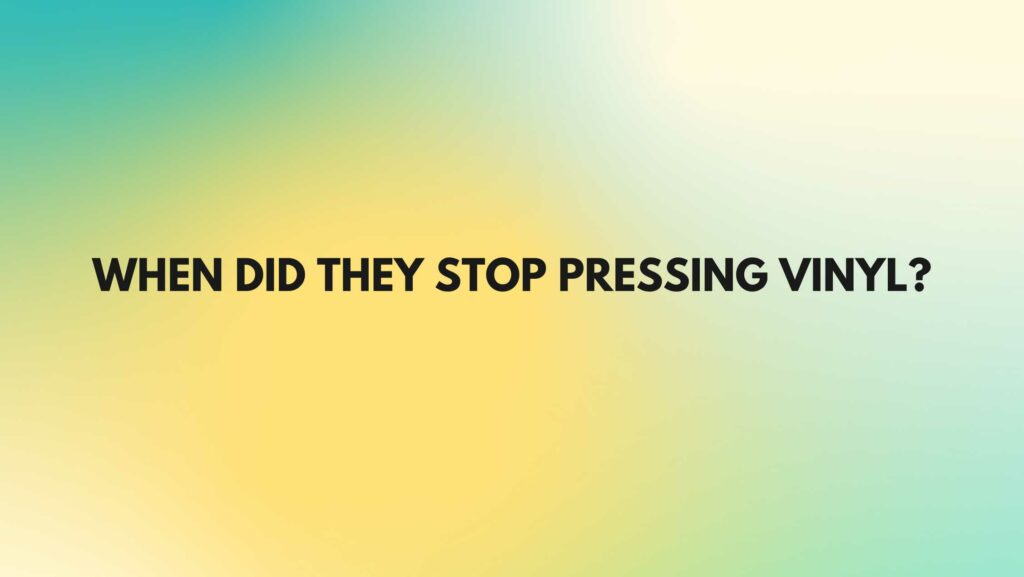Vinyl records have experienced a remarkable resurgence in popularity over the past few decades, captivating both audiophiles and music enthusiasts alike. The warm, analog sound, coupled with the tangible, artistic nature of vinyl, has sparked a renewed interest in this classic format. However, despite the vinyl revival, it’s essential to understand when and why the production of vinyl records declined in the first place before exploring their resurgence.
The Decline of Vinyl Production
Vinyl records, also known as LPs (Long Play) or simply records, have a rich history dating back to the late 19th century. For decades, they were the primary medium for storing and playing music. However, the decline in vinyl production can be attributed to several key factors:
- The Rise of Compact Discs (CDs): The introduction of the compact disc (CD) in the early 1980s marked a significant turning point in the music industry. CDs offered superior sound quality, durability, and portability compared to vinyl records. This technological advancement prompted a rapid shift in consumer preferences.
- Digital Music Revolution: With the advent of the internet and digital technology, music became increasingly accessible in digital formats. The proliferation of MP3 players, online music stores, and file-sharing platforms contributed to the decline in physical music media.
- Cost-Efficiency: Vinyl production is more labor-intensive and costly compared to CD manufacturing. Vinyl records require meticulous mastering and pressing processes, making them less cost-effective for record labels.
- Storage and Distribution: Vinyl records are bulky and fragile, making storage and distribution more challenging than digital formats or even CDs. This factor played a role in the declining popularity of vinyl.
When Did They Stop Pressing Vinyl?
The decline of vinyl production began in earnest during the 1980s but continued into the early 1990s. Major record labels shifted their focus toward CD production, phasing out vinyl records to a large extent. While the exact timeline varied by region and label, a few key milestones provide insight into when vinyl production slowed down:
- Early to mid-1980s: During this period, many record labels reduced their vinyl output and began prioritizing CD production. However, vinyl records were still available, particularly for certain genres like dance music.
- Late 1980s to early 1990s: By the late 1980s and early 1990s, vinyl production had declined significantly in the mainstream music industry. Many music enthusiasts began buying CDs as their primary format.
- Vinyl Niche Markets: Despite the overall decline, vinyl records continued to be pressed in smaller quantities for niche markets, including DJs, audiophiles, and collectors who valued the unique sound and tactile experience of vinyl.
The Vinyl Revival
While vinyl records faded from the mainstream music scene in the late 20th century, they never completely disappeared. In the early 2000s, vinyl experienced a remarkable resurgence driven by a combination of factors:
- Nostalgia: Many music enthusiasts who grew up with vinyl records started to rekindle their love for the format, seeking to recapture the nostalgia of spinning records.
- Audiophile Appeal: Audiophiles appreciated the warm, analog sound that vinyl records offered, believing it to be a purer and more authentic representation of music.
- Collectibility: Vinyl records became collectible items, with limited editions, colored vinyl, and unique packaging attracting collectors.
- Music Discovery: Independent and underground artists began releasing music on vinyl, contributing to vinyl’s appeal as a format for discovering new and niche music.
Conclusion
The decline of vinyl production occurred primarily during the 1980s and early 1990s, as the music industry shifted its focus toward CDs and digital formats. However, vinyl never disappeared entirely and remained a niche format for collectors and enthusiasts. The vinyl revival, which began in the early 2000s, has seen vinyl records make a triumphant return to the mainstream, with sales increasing year after year. Today, vinyl records coexist alongside digital formats, offering music lovers a unique and enduring way to experience their favorite songs.


